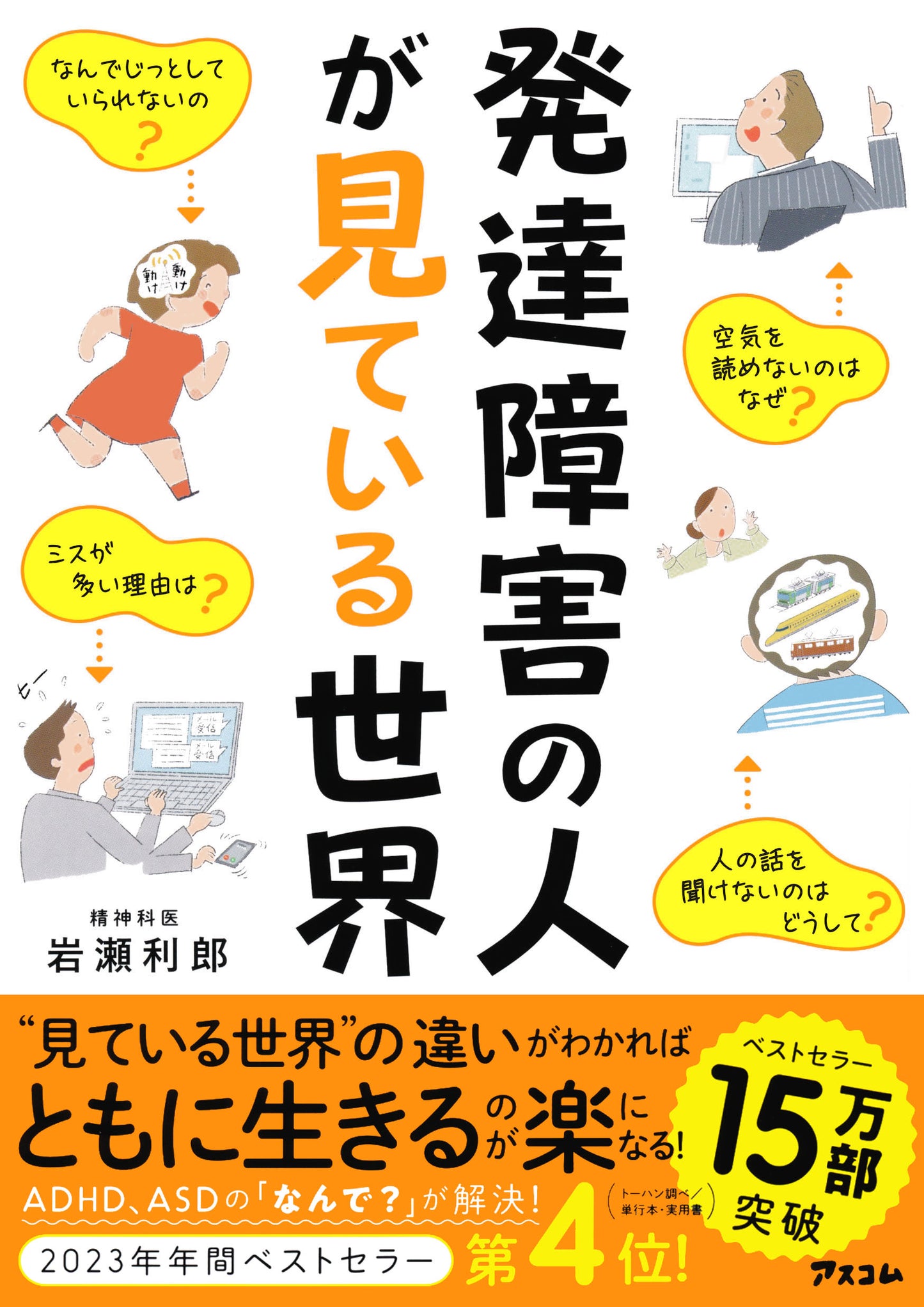Sumi
BOOK "The World Seen by People with Developmental Disorders" / 発達障害の人が見ている世界
BOOK "The World Seen by People with Developmental Disorders" / 発達障害の人が見ている世界
Couldn't load pickup availability
"What does the world look like through the eyes of someone with ADHD or ASD?"
This book, written by a psychiatrist who has worked with over 10,000 individuals with developmental disorders, offers a window into the unique perspectives of people with ADHD and Autism Spectrum Disorder (ASD).
What Are Developmental Disorders?
In simple terms, they are differences in brain function. Research shows that individuals with developmental disorders often have reduced ability to interpret social cues or infer others’ emotions compared to neurotypical individuals.
These differences can manifest as behaviors that may seem puzzling, such as:
- Making blunt or seemingly inappropriate comments.
- Breaking promises, being chronically late, or forgetting commitments.
- Reacting emotionally with tears or anger.
- Struggling to sit still or stay focused.
By understanding how these individuals perceive the world, you can find ways to better communicate and coexist.
A Closer Look at Their Perspective
For example:
-
"Why don’t they understand sarcasm or social niceties?"
The answer lies in brain function—many individuals with developmental disorders interpret words literally. -
"What can I do about it?"
Adopting clear, straightforward language in conversations can significantly improve communication.
What’s Inside the Book?
This guide introduces 32 common challenges faced by both adults and children with developmental disorders. For each, it explains:
- The reason behind the behavior.
- Practical strategies to address the issue.
Whether you’re an individual wondering, "Could I have a developmental disorder?" or a parent seeking support for a child, this book provides tools to identify challenges and find solutions.
Who Will Benefit from This Book?
-
Individuals with developmental traits or a diagnosis.
Recognizing these traits and learning coping strategies can alleviate much of the difficulty they face. -
Parents and caregivers.
Understanding the child’s perspective can make parenting less stressful and more effective. -
Those interacting with people in the "gray zone."
Many people may not meet the clinical criteria for a developmental disorder but exhibit similar tendencies.
By moving beyond labels—whether it’s “developmental disorder,” “gray zone,” or “neurotypical”—this book aims to serve as a tool for improving communication and building stronger relationships.
If you’ve ever found yourself struggling to understand someone’s behavior, this book can offer the insights you need to make life a little easier for everyone involved.
この本は、これまで1万人以上の発達障害の人たちと向き合ってきた精神科医の著者が、発達障害の特性を持つ人、とりわけADHDとASDの人が"見ている世界"を紹介する一冊です。
発達障害とは、一言で言えば脳機能の特性。状況を読んだり、人の気持ちを推測したりする脳の働きが定型発達の人より弱いことがわかっています。
失礼なことを平気で言ったり、
繰り返し約束を破ったり遅刻したり、
すぐに泣いたり怒ったり、
じっとしていられなかったり...
理解に苦しむその言動も、本人たちが物事をどう受け止め、感じているのか、つまり"見ている世界"を理解し、その対応策を学ぶことで、ともに生きるのが楽になるはずです。
たとえば、「発達障害の人には社交辞令や皮肉が通じない」といいう困りごとの場合、その理由が「脳の特性により、言葉を字義通りに受け取ってしまう」という原因によるものだと知れば、少しは気持ちが落ち着くでしょう。
そして、「発達障害の人と話すときは、極力ストレートな表現を心掛ける」という対処法にも納得がいくはずです。
この本では、大人から子どもまで、そんな身近にある困りごとを32個紹介し、その理由と対応策を紹介しています。
「自分も発達障害かも?」と思う人も、生きづらさの正体を知ることで適切にサポートを受けたり、対応策をとったりしていくことで、困りごとが解決されていくことでしょう。
特性を持つ子どもの親御様も、子育てが少し楽になるはずです。
定型発達の人でも、発達障害の特性に似た傾向を持つ人は、決して少なくありません。
また、発達障害との診断はくだらなくとも、発達障害の特性を持つ"グレーゾーン"の人もいます。
発達障害なのか。
グレーゾーンなのか。
定型発達なのか。
そういった診断的な面だけにこだわらず、さまざまなコミュニケーションの困りごとを解決するツールとしてこの本がお役に立てれば、これほどうれしいことはありません。
Share

